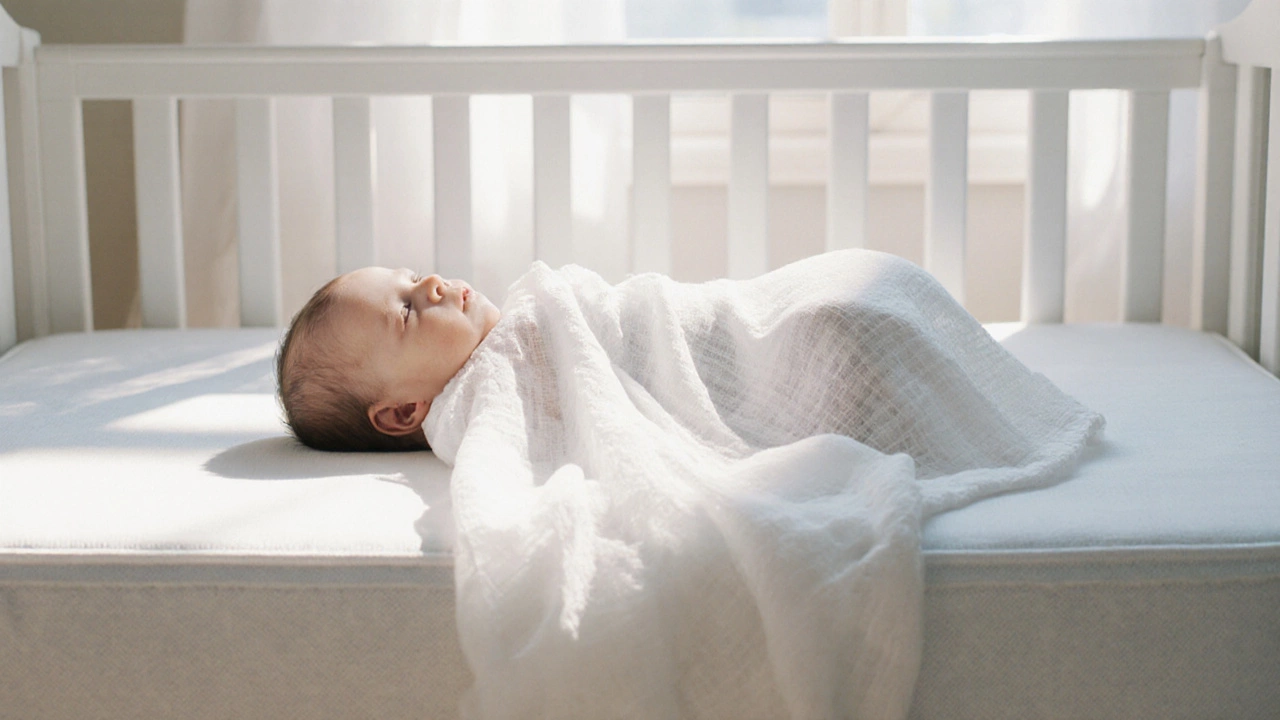Alternatives to Baby Blankets for Safe Sleep
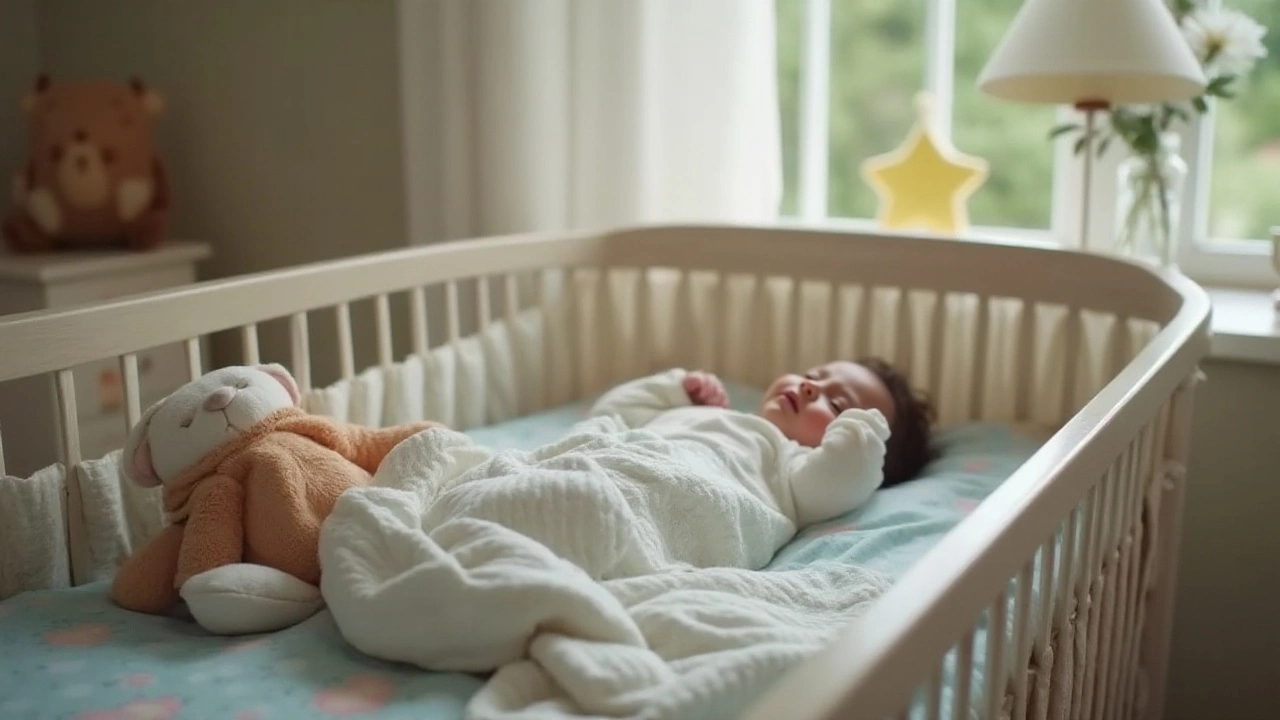
When it comes to ensuring a safe sleep environment for babies, many parents are turning away from conventional blankets. These snug and cozy items might seem perfect for keeping an infant warm, but they can pose serious safety risks. Instead, savvy caregivers are exploring alternative solutions designed with safety and comfort at the forefront.
The risks associated with traditional baby blankets mainly revolve around suffocation hazards and overheating. Instead, wearable blankets and specially designed sleep sacks offer a secure and convenient way to keep infants warm. These options come with features like secure fastenings and breathable materials to help maintain a comfortable sleep environment.
Beyond wearable solutions, it's essential to cultivate an optimal sleep ambiance. Factors such as room temperature, humidity, and even light levels contribute significantly to how well a baby sleeps. By addressing these environmental aspects, parents can foster a restful and safe environment for their sleeping angels.
- Why Traditional Blankets Pose Risks
- Exploring Wearable Blanket Options
- Innovative Sleep Solutions
- Creating a Perfect Sleep Environment
Why Traditional Blankets Pose Risks
The cozy allure of a traditional blanket is something every parent appreciates, often sparking nostalgia about their own childhood. However, using such blankets for infant sleep has its dangers, which are crucial for every caregiver to understand. Traditional blankets can inadvertently cover a baby’s face, increasing the risk of suffocation during those tender early months. Infants lack the motor skills needed to remove an obstruction that covers their breathing pathways, making blanket safety a paramount concern.
This risk isn’t merely theoretical. The American Academy of Pediatrics has consistently advised against the use of loose bedding, including traditional blankets, in cribs. Their guidelines stress the importance of a flat, bare crib to prevent Sudden Infant Death Syndrome (SIDS) and other sleep-related incidents. New parents might find this information surprising, but it underscores the necessity of exploring safer alternatives for maintaining warmth during sleep.
Moreover, overheating is another significant concern linked with traditional blankets. Babies are less capable of regulating their body temperature than adults. A thick or improperly layered blanket can lead to an elevated risk of overheating, a condition that experts have connected to SIDS. A temperature-controlled environment is vital, and this means carefully considering what covers an infant during naptime and overnight sleep.
"A baby’s room should be kept at a temperature comfortable for a lightly clothed adult," suggests the American Academy of Pediatrics, emphasizing a methodical approach to infant sleep safety.
These issues highlight why wearable blankets have grown in popularity. Unlike loose blankets, these snug garments are designed specifically to stay securely in place, eliminating the risk of covering the face and allowing parents peace of mind during those precious, quiet hours of the night. As technology advances, so do the options available to parents, offering a variety of infant sleep gear that cater to safety while ensuring a comfortable night’s sleep.
To bolster safety, it's essential to keep the crib environment as bare as possible. Avoid unnecessary items like toys and pillows that may introduce hazards. Simplicity is key to minimizing risk, ensuring that waking up to a happy and refreshed child becomes a daily delight rather than a source of anxiety. Understanding these risks associated with traditional blankets helps guide decisions that protect the well-being of the littlest family members.
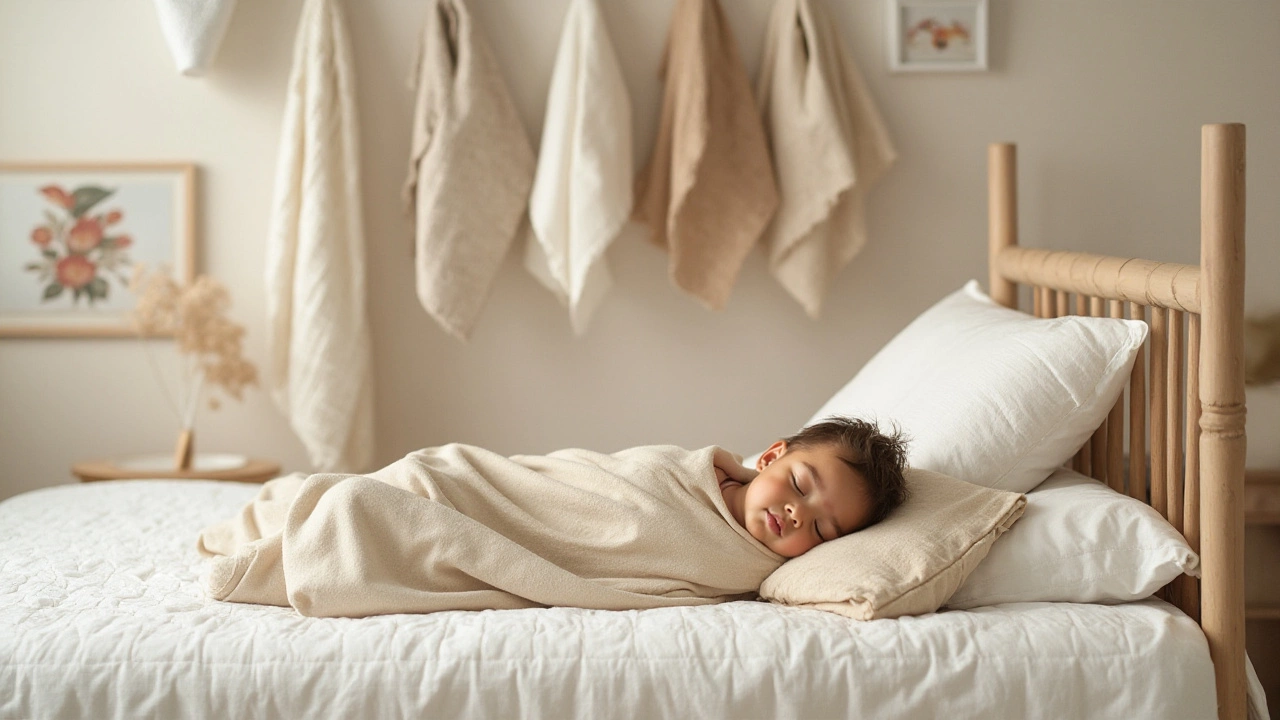
Exploring Wearable Blanket Options
As parents become more aware of safe sleep practices, the popularity of wearable blankets has skyrocketed. Unlike traditional blankets, these ingenious creations wrap around the baby and fasten securely, eliminating the risk of loose fabrics in the crib. These wearable options not only keep babies comfortably warm but also offer peace of mind to parents worldwide. Many modern designs feature innovative closures like zippers and snaps that prevent the wearable blanket from slipping off or covering the baby’s face.
Most wearable blankets are sleeveless, which helps to regulate body temperature by allowing air to circulate while keeping the baby's core warm. They are crafted from various materials, ranging from plush fleece to light cotton, catering to different climates and personal preferences. Some brands have even introduced multi-layered designs that can be adjusted as the seasons change, making them versatile and cost-effective for growing families.
Another popular option among caregivers is the swaddle sack—a combination of a swaddle and a sleep sack. It offers the snug feeling of a swaddle but with the added safety of being a wearable blanket. This transition from traditional swaddling helps reduce the startle reflex babies often experience, which can disrupt their rest. Swaddle sacks usually include wings that wrap around the baby's arms and secure with Velcro or similar fasteners, allowing for a tight fit without the risks posed by loose blankets.
The Halo SleepSack, for example, is a well-known brand that has become a staple among new parents. "This product provides the ease of mind every parent wants during sleep time," says Emily Richards, a certified sleep consultant,
"Parents love how simple it is to use without compromising on safety or comfort for the baby."With endorsements from organizations like the International Hip Dysplasia Institute, these products also promote healthy hip development because they allow for a natural leg and hip position, critical during the first months of life.
Infant sleep gear innovation doesn’t stop there. Some wearable blankets are now available with built-in monitoring technology that tracks a baby's sleep patterns, breathing, and movements—sending real-time data to a caregiver's smartphone. Products like these empower parents, giving them the ability to check in on their little ones without sneaking into the nursery and potentially disturbing precious rest. There are even options made from eco-friendly and hypoallergenic materials for parents who prioritize sustainable choices in products.
For those navigating the labyrinth of wearable blanket options, it's essential to consider factors like material, ease of use, and design features. Investing in a good-quality wearable blanket can translate to fewer wakeful nights spent worrying and more comfortable rest for both baby and parents. Indeed, wearable blankets are an integral part of today's baby sleep safety toolkit, reflecting the evolving understanding of nurturing practices and the increasing focus on well-being.
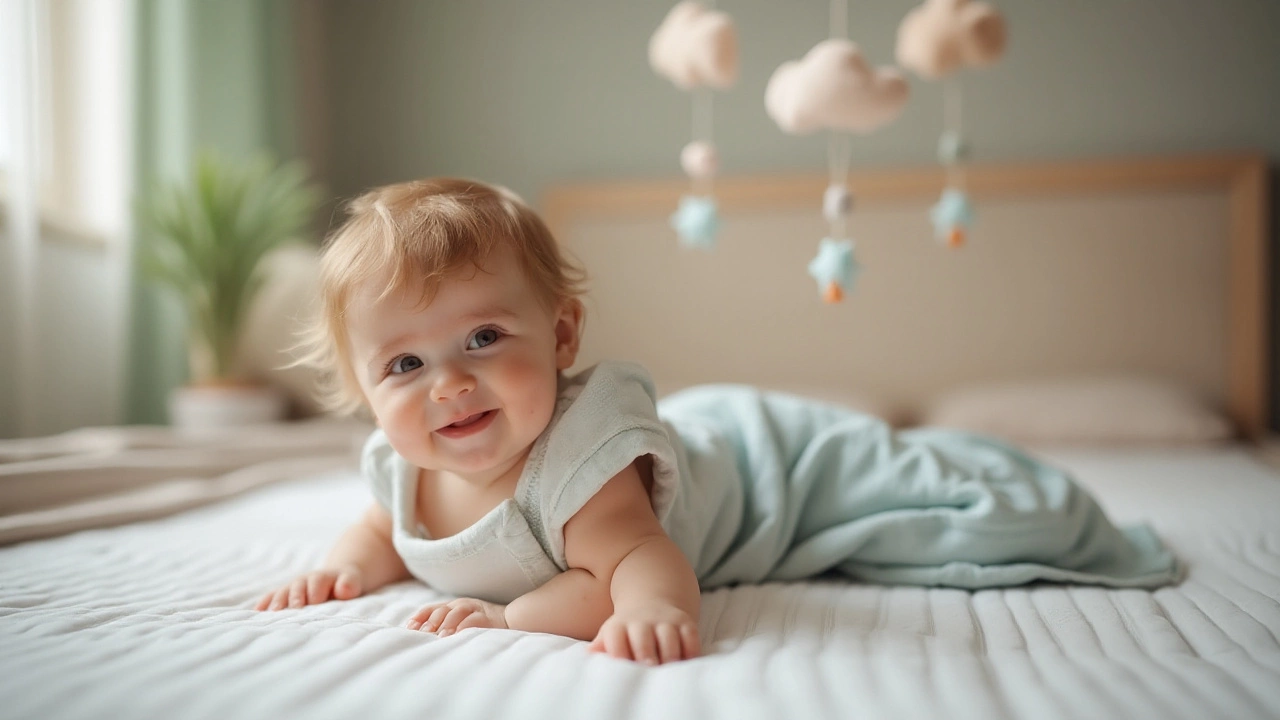
Innovative Sleep Solutions
As modern parents become more conscious of baby sleep safety, the market has responded with an array of innovative solutions to replace traditional baby blankets. These advancements are not just about safety; they're about redefining comfort and convenience for both parents and infants. The evolution of baby sleep gear reflects a blend of cutting-edge technology with a deep understanding of infant needs.
One remarkable invention is the smart crib. These cribs are designed to simulate the gentle sensations of a mother’s womb, often using motion and sound to soothe the baby into a restful sleep. Smart cribs can detect when a baby is fussing and gently sway to calm them. Some even come with integrated white noise machines that mimic the soft hums that infants are used to from their time in the womb. Studies have shown that such environments can significantly enhance infant sleep patterns, making them an exciting option for tech-savvy families.
Wearable technology extends beyond swaddles and sleep sacks. Certain innovations now include sleep trackers embedded in baby garments. These trackers monitor a baby’s sleep cycle and provide parents with feedback on sleep quality. Valuable insights from such devices can be instrumental in understanding sleep rhythms and making informed decisions about bedtime routines. Moreover, they can alert parents about any unusual patterns, offering peace of mind and a proactive approach to infant sleep gear management.
There's also a growing trend towards temperature-regulating sleepwear made from smart fabrics. These materials adapt to a baby’s body heat and keep them comfortably snug without the risk of overheating, which is a common concern with traditional blankets. Natural fabrics like bamboo or organic cotton are increasingly popular for their breathability and hypoallergenic properties. An added bonus is their sustainability factor, which appeals to eco-conscious parents looking to reduce their carbon footprint while ensuring their baby’s comfort.
In keeping with the emphasis on safe sleep environments, motion-activated nightlights are becoming a staple in baby nurseries. These devices offer a soft, soothing glow that activates only when needed, ensuring that sleep disruption is minimal. Alternatively, some parents opt for sleep trainers with a light component that can be programmed to change color based on the desired sleep schedule. Such tools can be helpful in establishing nightly routines and teaching older infants when it’s time to get up. According to a survey conducted by a leading parenting magazine, over 70% of parents reported better sleep quality for their children after incorporating some form of smart lighting in their sleep setup.
The landscape of baby sleepwear and accessories continues to evolve with ongoing research and development. As more parents recognize the importance of optimizing infant sleep environments, the demand for innovative solutions will undoubtedly continue to grow. Whether relying on technology, sustainable materials, or clever engineering, each option provides unique benefits to cater to the varying needs of babies and parents alike. With so many choices available, finding the perfect sleep solution is more accessible than ever, ultimately contributing to the overall well-being of infants worldwide.
Dr. Emily Green, a pediatric sleep specialist, noted, "The integration of technology in infant sleep products holds tremendous potential. When used appropriately, these innovations not only enhance sleep quality but also promote safe sleep practices, which are crucial during the early developmental stages."
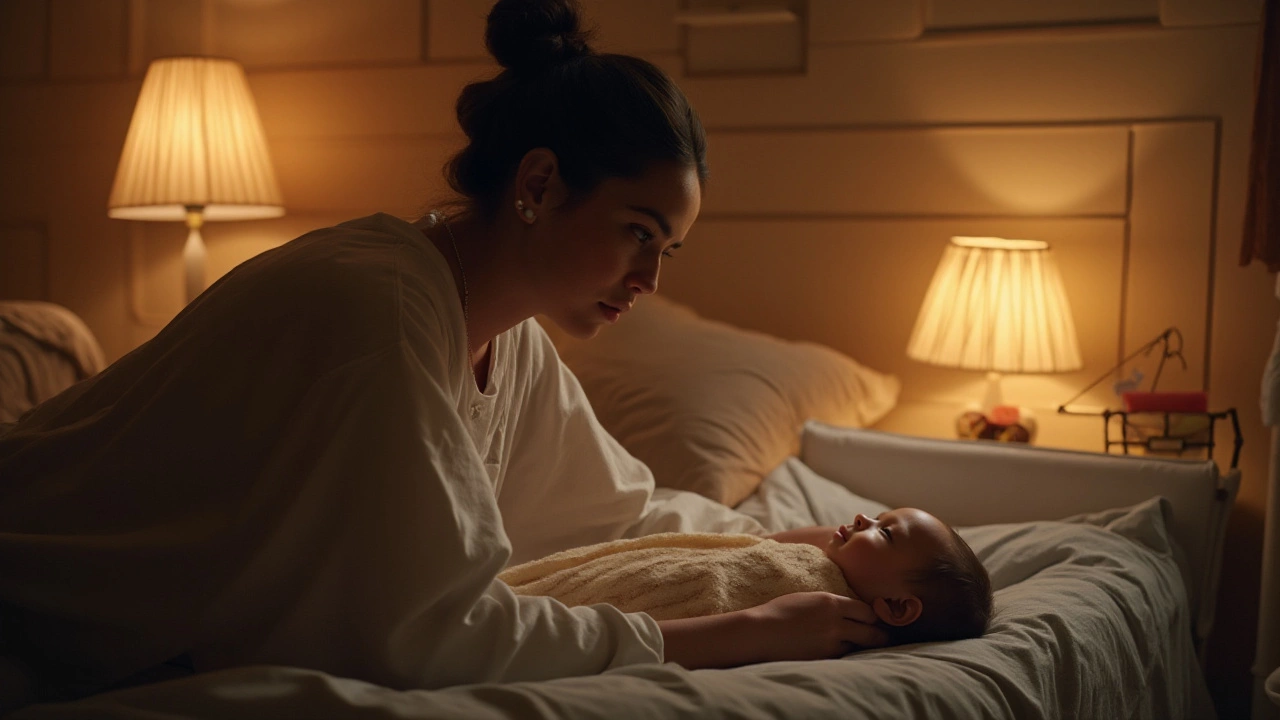
Creating a Perfect Sleep Environment
Establishing an ideal sleep setting for your baby is vital to ensure they grow happy and healthy. The first aspect to consider is the room's temperature. Experts from the American Academy of Pediatrics suggest keeping the nursery temperature between 68 and 72 degrees Fahrenheit. This range prevents the risk of overheating, which is a contributing factor to Sudden Infant Death Syndrome (SIDS). To maintain consistent warmth, a thermostat or a baby monitor with temperature sensors could be beneficial for vigilant monitoring.
Another significant element is controlling the humidity levels. A bedroom that's too dry can lead to throat irritation and disturbed sleep for your little one. Aim for humidity levels between 30% and 50% for optimal sleep conditions. Using a humidifier during dry months might assist in achieving the right balance. Bear in mind to ensure the humidifier is regularly cleaned to prevent mold or bacteria, which might lead to respiratory issues.
Lighting also plays a pivotal role in crafting the perfect sleep environment. Newborns do not yet distinguish between day and night, so a dimly lit room can naturally signal that it is sleep time. Some parents find blackout curtains useful as they block out unwanted light during naps. Another strategy is using soft, indirect lighting such as a dim nightlight to allow soothing illumination without disturbing your baby’s sleep patterns.
On the auditory front, consistent sound often soothes babies. Many families opt for white noise machines or fans to create a gentle hum that drowns out any jarring household noises. Particularly when living in bustling areas, minimizing sudden noises can help maintain tranquil sleep. In this respect, some parents vouch for the positive effect of playing gentle lullabies.
Comfort is key, and environmental considerations go hand-in-hand with bedding. A firm mattress with a fitted sheet is often recommended. Items such as bumps, cushions, or toys should not be present to prevent any suffocation risk, especially as your baby grows and becomes more mobile.
"A consistent routine promotes better sleep," notes Dr. Samantha Wilson, a pediatric sleep specialist. "Setting a bedtime ritual, such as reading or gentle rocking, helps signal to your baby that it is time to rest."
Adjustments may be needed to address personal preferences, but following these parameters generally creates a nurturing atmosphere for restful baby sleep.
